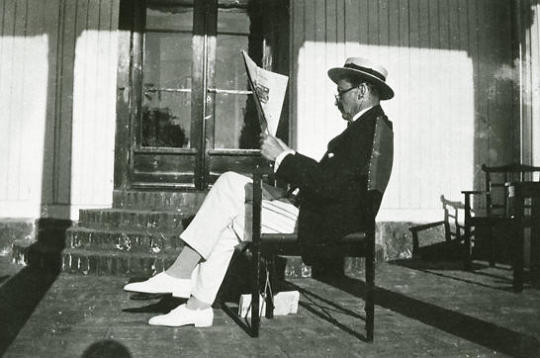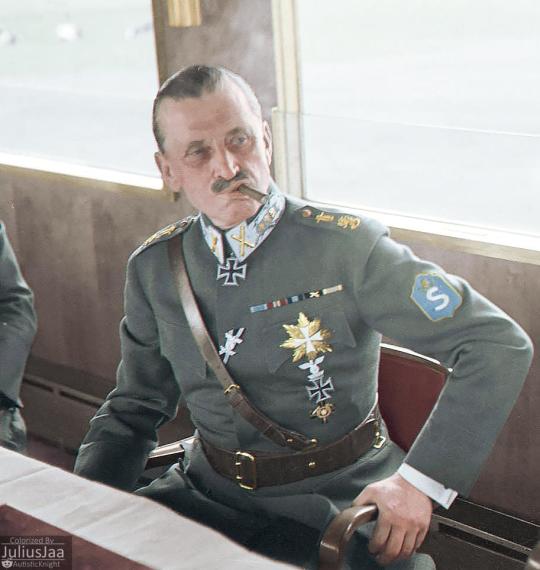#equestrian statue of marshal mannerheim
Explore tagged Tumblr posts
Video
Lonely Rider by Pekka Nikrus Via Flickr: In album Imitations & Relations
#pool#water#statue#sculpture#monument#reflection#evening#sky#aimo tukiainen#kiasma#museum of contemporary art#nykytaiteen museo#museum för samtidskonst#lasipalatsi#glaspalatset#city center#keskusta#helsinki#helsingfors#finland#suomi#pni#pekka nikrus#skrubu#marsalkka mannerheimin ratsastajapatsas#marskalk mannerheims ryttarstaty#equestrian statue of marshal mannerheim#carl#gustaf#emil
2 notes
·
View notes
Photo

The French are completely without scruples, energy or valor - the Great War castrated them and left them diminished, whiney, mistaking bickering for debate and shrillness for eloquence, they are a nation in such effete decline that Shickelgrubber, when he finally attacks them, might be dancing with the keys to Paris in his hand after a week or two of puny skirmishing.
- Carl Gustaf Emil Mannerheim, The Memoirs of Marshal Mannerheim
Carl Gustaf Emil Mannerheim (1867–1951) charted the course of Finnish history and was voted greatest Finn of all time, ahead of Sibelius.
He served as a general in the Russian Imperial Army for decades, and later became a war hero in his home country of Finland against Stalin’s aggression. He was the symbol of the Finnish struggle against Soviet Russia during the Winter War of 1939–1940. He was hailed as a champion of liberty throughout the Western world during those 105 days of stubborn resistance against a vastly superior enemy.
This was not the first time that the stately representative of Finland’s Swedish-speaking aristocracy had been supreme commander in a war against Russia.
The War of Liberation in 1918 – later also called the Civil War – had been fought against Soviet Russia and against its allies, the Finnish “Reds.” And the Winter War was not the last war Mannerheim fought against Russia, either.
The period of combat known as the Continuation War, 1941 to 1944, during which German forces fought alongside the Finnish army, exacted a much heavier toll on Finland and Russia than the Winter War had.
Moreover, during the Continuation War, Finnish forces even advanced into Russian territory with the intention of annexing Eastern Karelia, a region which had never belonged to Finland.

Mannerheim’s record as a soldier was impressive. He fought for Russia on the battle front in both the Russo-Japanese War of 1904–05 and in the First World War between 1914 and 1917. General Mannerheim was decorated with the St George’s Cross for gallantry and was famous for his military skill and efficacy.
Mannerheim was also an able sportsman whose horsemanship won prizes. This was evidently one of the reasons why he was chosen for the formidable task of undertaking a reconnaissance mission, on horseback through Asia, that lasted two years.
A non-Russian officer in the Imperial Army was no rarity. In fact, there were thousands of them. Many of these inorodtsy or “non-orthodox” subjects of the emperor serving in the Russian army came from the Baltic provinces, spoke German as their mother tongue and were Lutheran by religion, as was Mannerheim.
However, Mannerheim’s background differed from that of his Baltic brother officers. He came from the Grand Duchy of Finland, which sent more than 4,000 officers to serve in the Russian army between 1809 and 1917. Almost 400 of them reached the rank of general or admiral.
Most of the officers from Finland spoke Swedish as their mother tongue, Finnish being used mainly as a second language, if they knew it at all. Mannerheim’s Finnish before 1917 was far from fluent.
However, in common with the Baltic German officers, the Finnish officers served the emperor impeccably. In fact, there are no records of disloyalty among the Finns, even during the period from 1899 to 1917 when Russia began to pressure Finland by undermining its juridical status. In lieu of disloyalty, some of the officers chose to retire from active service.

Mannerheim did not retire. He remained a faithful soldier even though he privately deplored the emperor’s policies, which he regarded as unwise. Even when his own brother was exiled to Sweden, Mannerheim’s loyalty to the emperor remained unshaken. His relatives understood his position.
It was only when the Bolshevik revolution of 1917 crushed the old order that Mannerheim realised his ties of loyalty to Russia had been cut. After the revolution he became a champion of the White Finnish cause.
His loyalty towards his native land was now total and he always respected its democratic institutions even though he was hardly a true democrat by conviction.
Mannerheim’s career in the service of two states is an intriguing story that excites curiosity. To Russians, Mannerheim is above all the cultivated young officer of the Chevalier Guards who stood by Nicholas II during coronation procession.
In Finnish eyes Mannerheim stands tall as the elderly marshal, a man of honour and a fatherly figure whose moral integrity and intelligence could always be trusted.
During his own lifetime he became, alongside Sibelius, the best-known Finnish personage at home and abroad. Even at an early stage in his career, he was the object of admiration and respect, a fact reflected in street names, statues and a home museum highly regarded by the public.

The admiration and respect have fluctuated with the changing times. The winning side initially regarded the Commander-in-Chief of 1918 even with the admiration due to a legendary figure; the losing side with resentment. Between 1939 and 1944 the enemy attempted to rekindle negative emotions that had already subsided - though what they achieved was more of a counterstroke.
During the leftist upsurge of the 1970s, criticism of Mannerheim re-emerged. Admiration became correspondingly more marked at the time of the Marshal of Finland's death and burial, in connection with the great equestrian statue project in the late 1950s, and again in the 1980s and 1990s.
41 notes
·
View notes
Video
A Single Horseman by Pekka Nikrus Via Flickr: In album Pools & Puddles
#monochrome#pool#water#statue#sculpture#monument#reflection#evening#sky#aimo tukiainen#kiasma#museum of contemporary art#nykytaiteen museo#museum för samtidskonst#city#center#keskusta#marsalkka mannerheimin ratsastajapatsas#marskalk mannerheims ryttarstaty#equestrian statue of marshal mannerheim#carl#gustaf#emil#helsinki#helsingfors#finland#suomi#pni#pekka nikrus#skrubu
1 note
·
View note
Video
Headless Horseman (Shadow Rider 2) by Pekka Nikrus
#construction#site#fence#shadow#equestrian statue#marshal mannerheim#aimo tukiainen#kiasma#museum of contemporary art#nykytaiteen museo#museum för samtidskonst#helsinki#helsingfors#finland#suomi#pni#pekka nikrus#skrubu
0 notes

